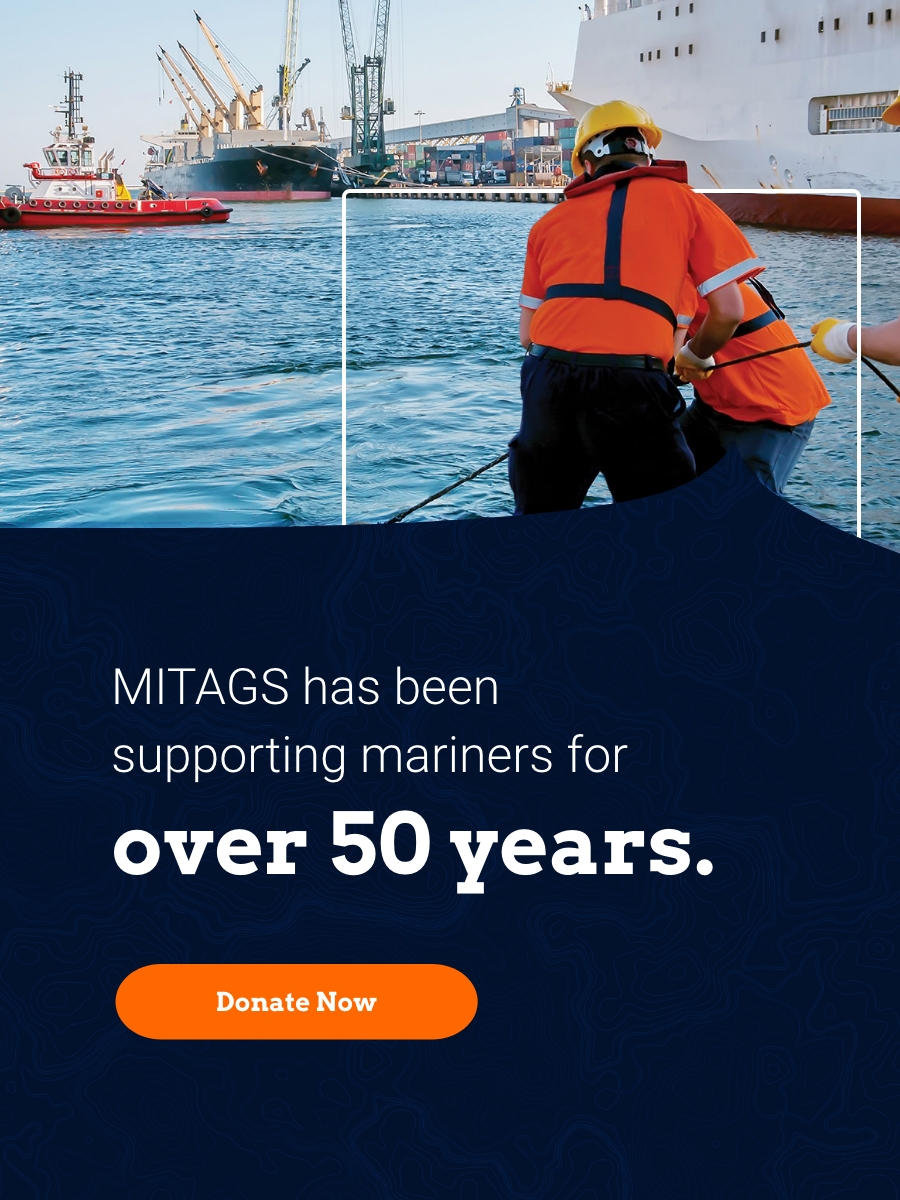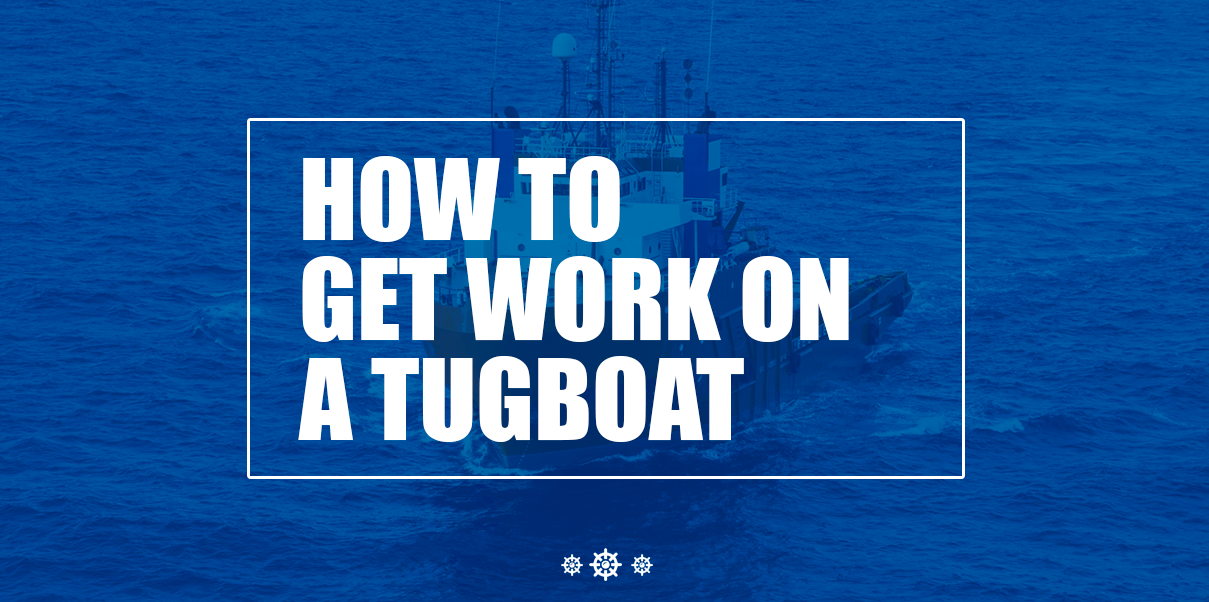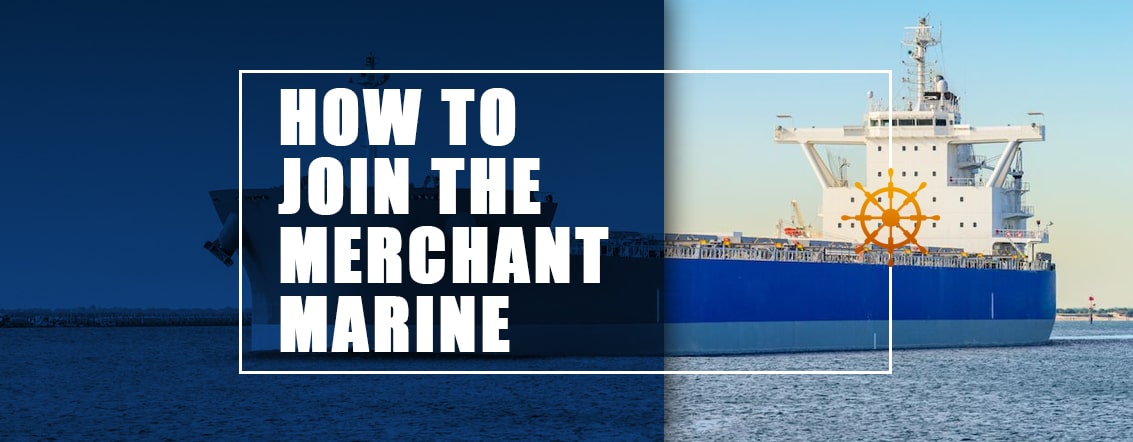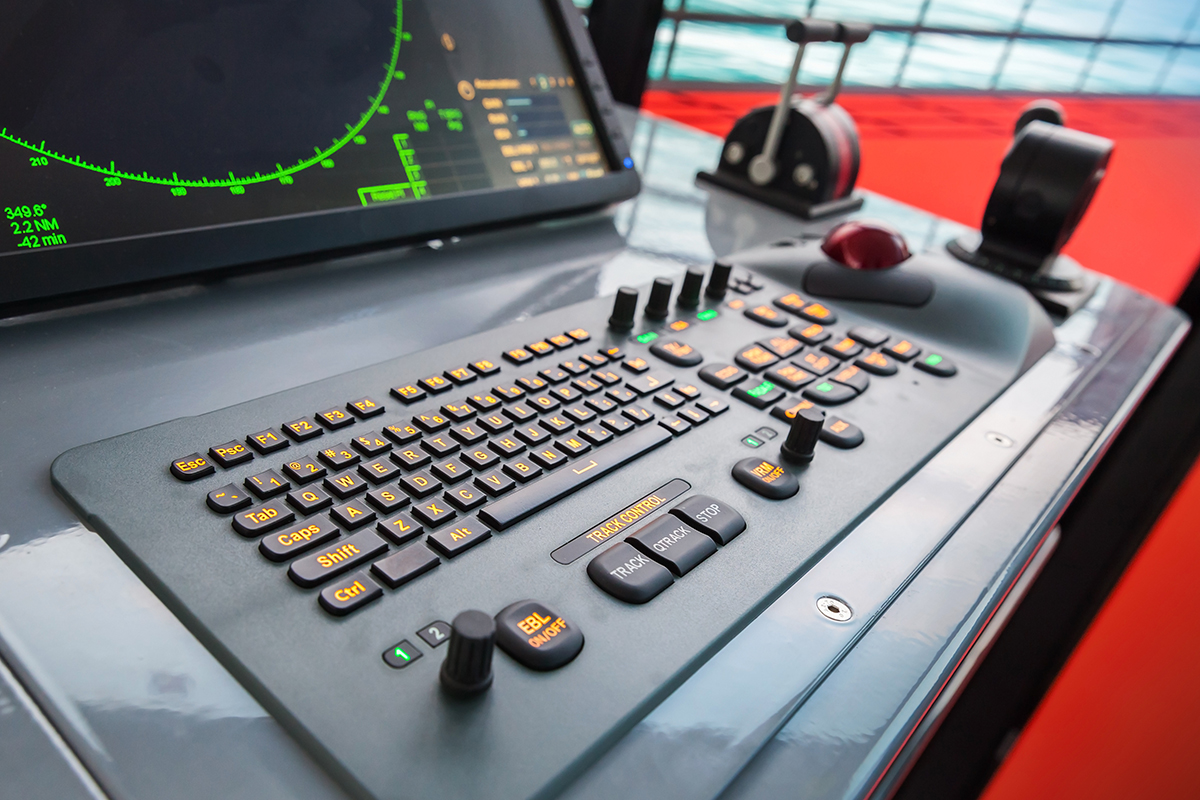Have you ever considered a life at sea on a merchant ship? Maybe you are familiar with the merchant marines and are interested in the different career paths. Or perhaps you are attending a maritime academy and are interested in learning more about the officer roles onboard? In this article, we will examine the functions of a chief mate and the training and experience needed to fill the role.
What is a Chief Mate?
The Chief Mate, Chief Officer, or First Mate/Officer is the department head for the Deck Department. They supervise the members of the deck department including Second and Third Mates, able-seafarers, and ordinary seaman or deckhands. On most vessels, the Chief Mate is second in command after the Captain. Some vessels, usually cruise ships or large passenger vessels, have First Mate/Officers. This role is typically junior to the Chief Mate/Officer.
Chief Mate Duties and Responsibilities
Chief Mates have many duties and responsibilities. Specific duties and responsibilities vary by vessel but typically include deck department management, navigation watch-standing, cargo operations, safety and firefighting operations, environmental protection, as well as acting as a vessel security officer and medical officer.
- Deck department management duties include purchase ordering, managing personnel and purchasing budgets, managing personnel work/rest hours and watch schedules, managing preventive maintenance schedules, and identifying maintenance projects.
- Navigation watch-standing responsibilities include voyage plan implementation, position plotting, collision avoidance, traffic management, and emergency response.
- Cargo operation responsibilities include the safe loading, discharging and stowage of cargo, ballast operations, stability, and management of hazardous cargos, cargo handling equipment maintenance, inspection, and certificates.
- Medical officers are responsible for medical case response and management, medical supplies, and inventory, as well as training the crew on first aid.
- Environmental protection responsibilities include the implementation, maintenance, training, and drilling of the Garbage Management Plan, Shipboard Oil Pollution Emergency Plan, Vessel General Permit, and other regulations.
- Vessel Security Officers are responsible for the implementation, maintenance, training, and drilling of the Vessel Security Plan, The International Ship and Port Facility Security (ISPS) Code, and Maritime Transportation Security Act.
- Safety and firefighting operational responsibilities include the supervision of the maintenance of equipment, response proficiency, and training of the crew.
How Much Does a Chief Mate Earn?
In the United States, the Bureau of Labor Statistics’ May 2019 report states an average annual wage for “Captains, Mates, and Pilots of Water Vessels” is over $70,000, with the top 10% of earners reporting annual wages over $150,000. However, there are many factors that influence a Chief Mate’s wages. These factors include the sector of the industry or type of vessel, amount of experience, flag state, and the negotiated contract.
Are You Ready to Pursue a Career as a Chief Mate?
While the role of Chief Mate comes with many duties and responsibilities, it also comes with many rewards. For many officers, it is their first opportunity to exercise their leadership skills. Leading people requires effective communication, understanding how to motivate others, and a compelling vision for the future of the group. The role of Chief Mate also requires management skills. Chief Mates must balance the operational needs of the vessel against the constraints of budgets, work/rest hours, and labor regulations. While it takes time and energy, many Chief Mates find the coaching, mentoring, and training, which is part of the job, very satisfying. Questions? Contact a School Advisor to Learn More
Guide: How to Become a Chief Mate
- Meet Chief Mate Experience Requirements
- In accordance with 46 CFR 11.405, to obtain a National Chief Mate of unlimited tonnage upon oceans near coastal waters, you must have 360 days of sea service while holding an endorsement as Second Mate. To maintain an unlimited tonnage license, all of the services must be on a vessel of 100 gross registered tons or more AND at least half of the service must be on vessels of 1600 gross registered tons or more.
- In accordance with the Standards of Training, Certifications, and Watchkeeping (STCW) and 46 CFR 11.307, to obtain a Chief Mate 3,000GT or more Management Level endorsement, you must have 360 days of sea service as an Officer in Charge of a Navigation Watch (OICNW).
- Pursue Education and Training
When scheduling your Chief Mate/Master classes, ensure the courses are United States Coast Guard approved. You may find that the course approval also includes some of the required assessments. Check with your course provider for details.
-
- In accordance with 46 CFR 11.201, applicants for a National Chief Mate’s license must have Basic and Advanced Fire Fighting certificates within 5 years of applying or have previously met this requirement. You must also have taken First Aid and CPR within the last year.
- In accordance with the Standards of Training, Certifications and Watchkeeping (STCW) and 46 CFR 11.307, to obtain a Chief Mate 3,000GT endorsement you must attend the following courses:
- Advanced Ship Handling
- Advanced Stability
- Advanced Meteorology
- Leadership and Managerial Skills
- Search and Rescue
- Management of Medical Care or Medical Care PIC
- Basic & Advanced Fire Fighting or a valid STCW endorsement
- Basic Training within the last 5 years
- Optional classes include:
- Radar
- ARPA
- GMDSS
- ECDIS
3. Complete Assessments
In accordance with the Standards of Training, Certifications, and Watchkeeping (STCW) and 46 CFR 11.307, to obtain a Chief Mate 3,000GT endorsement, you must complete the 94 assessments outlined in NVIC 10-14. These assessments can be completed in an approved course and/or onboard a vessel. Assessments completed onboard must be signed by an assessor with “at least 1-year experience as Master on vessels of at least 1,600 GRT or 3,000 GT.” For the function “cargo handling and stowage,” the assessor should have “at least 1 year of experience as or equivalent to Chief Mate and/or Master on cargo-carrying vessels of at least 1,600 GRT or 3,000 GT” in accordance with NVIC 19-14. After December 31st, 2021, assessments must be signed by a Qualified Assessor, in accordance with “USCG Notice on Qualified Assessors 13 December 2019”.
4. Apply for Merchant Mariner Credential (MMC) & Passing the Exams
Once your courses and assessments are completed (as necessary), you will need to apply for your license and/or STCW endorsement. MITAGS recommends that you utilize the checklists provided on the National Maritime Center’s (NMC) website, to ensure that you have met all the requirements. You can apply for your license and/or STCW endorsement by completing form “CG-719B” and submitting your supporting paperwork (course certificates, assessment records, etc.) to the Regional Exam Center (REC) either in person or electronically. The following is guidance for electronic submittal:
SUBMISSION OF MMC
Both MMC applications can be submitted to a REC via e-mail using the following process:
- Select a REC and complete all necessary application forms using the Coast Guard’s Application Acceptance Checklist as a guide for required documents.
- Include a copy of your TWIC, TWIC application receipt, or TWIC exemption statement in your e-mail attachment(s).
- The preferred method to pay user fees (if applicable) is by using www.pay.gov. Include a copy of your pay.gov user fee receipt in your e-mail attachment(s).
- Completed applications must be scanned at a resolution not exceeding 300 dpi, saved in PDF format, and cannot exceed 8 MB in size. If e-mail size (including attachments) exceeds 8 MB, send documents in multiple e-mails.
- Visit the REC webpage and select a REC to determine that location’s e-mail address. 6. The subject line of your e-mail must be: Last name, First name, Middle name, mariner reference number. For example: Mariner, Johnny, L, 123456. NOTE: New applicants will not have a reference number.
- Ensure all attachments are included, then send. Please use the minimum number of e-mails to send your application and attachments.
The National Maritime Center will update you on the status of your application. Typically, you will be notified when you application has been forwarded from the REC to the NMC and when it is being vetted by and approved by safety & suitability, professional qualifications and medical screening and evaluation. Once your application’s evaluation is complete, you will receive an “approval to test letter.”
In accordance with 46 CFR 11.201 and 46 CFR 11.903, applicants for a National Chief Mate’s license must pass a 9-module exam as outlined in the Deck and Engine Exam Guide. Exams are to be taken at any Regional Exam Center and must be scheduled in advance. This exam includes:
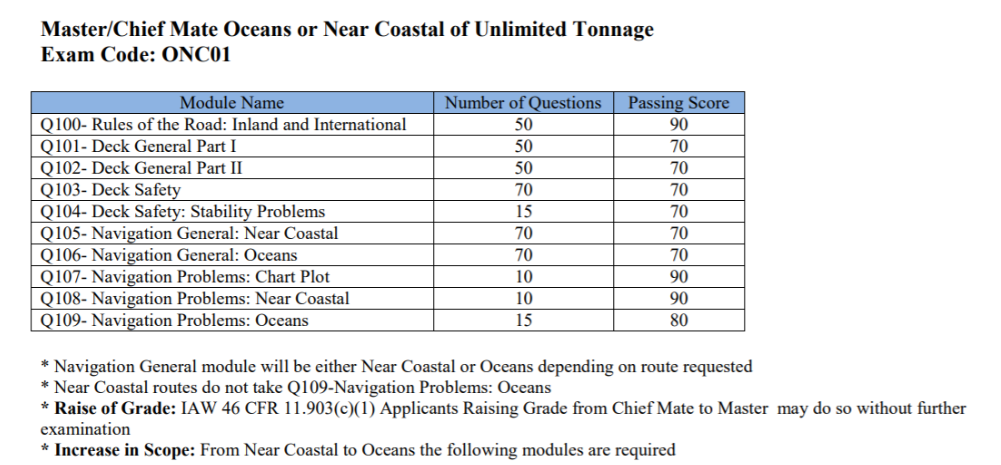
Rules on retakes, testing procedures and materials provided and allowed in the test room are outlined in the Deck and Engine Exam Guide.
Chief Mate Courses and Training From MITAGS
MITAGS’ STCW-2010 training program is designed for the experienced officer in charge of a navigational watch (Second & Third Officers) who is ready to upgrade to Chief Mate / Master management level. This complete program offers all the mandatory and optional training and assessment requirements to upgrade to the management level Chief Officer/Mate.
Contact a School Advisor to Learn More
The MITAGS Mate to Master (CMM) program is thirteen weeks (65 days) of USCG National Maritime Center (NMC) approved training and simulations that provide you with the knowledge, skills and confidence to assume the duties and responsibilities of a Chief Mate and Master. The courses are constantly updated and taught by highly experienced Captain/Instructors. Where applicable, advanced simulation is incorporated into the courses. MITAGS has prepared more deck officers to move up to the management level than any school in the United States.
Please note that as of 24 March 2014, with the implementation of USCG NVIC 10-14 (Ch-1) and NVIC 11-14 (Ch-1) the only courses that are MANDATORY, but do NOT complete all other assessment tasks as required by the NMC are:
10 – Day Advanced Ship handling
05 – Day Advanced Stability
05 – Day Advanced Meteorology
05 –Day Leadership & Managerial Skills
10 – Day Medical Person in Charge (Management of Medical Care)
05 -Day Electronic Chart Display Information System (ECDIS)
The following optional MITAGS CMM Courses are included within the MITAGS CMM Program and will complete the remaining eighty-one (81) tasks that are needed to upgrade OR you may complete these task onboard ship by a Management Level Deck Officer until 31 December 2019; after (01 January 2020) these tasks must be signed by a Management Level Deck Officer who is also a Qualified Assessor.
10 – Day Advanced Cargo Operations/Cargo Handling & Stowage (Management Level)
05 – Day Advanced Watchkeeping
05 – Day Ship/Shipboard Management
(Management of Medical Care is included in this class as well)
05 – Day Marine Propulsion Plants
05 – Day Voyage Planning & Electronic Navigation
25 – Day License Advancement Program (License Preparation)
Please note that the west coast campus offerings are no longer limited to ECDIS and Advanced Ship handling. MITAGS’ west coast campus now offers the entire Mate to Master Program.
Although not part of the program, many students also enroll in optional courses such as Flashing Light, and Radar Renewal.
Advance Your Maritime Career with Our Support
Contact a MITAGS advisor to learn more about continuing your maritime education. Our Student Service Advisors are happy to answer you questions on requirements, courses, scheduling, and pricing.

